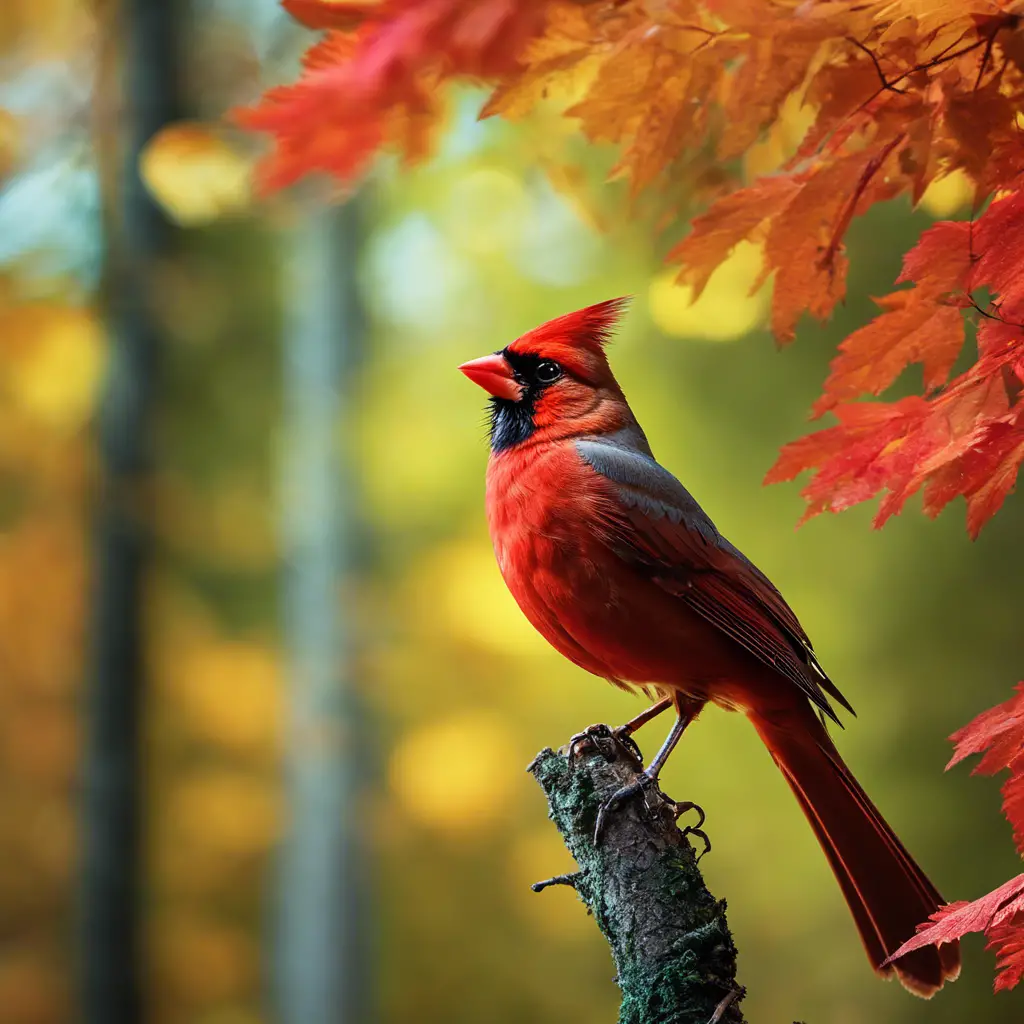To help you identify the most popular species of birds found in Ecuador, we’ve put together a database full of pictures and Critical information collected from trusted sources. Each entry was checked for accuracy by an Ornithologist.
Great Kiskadee
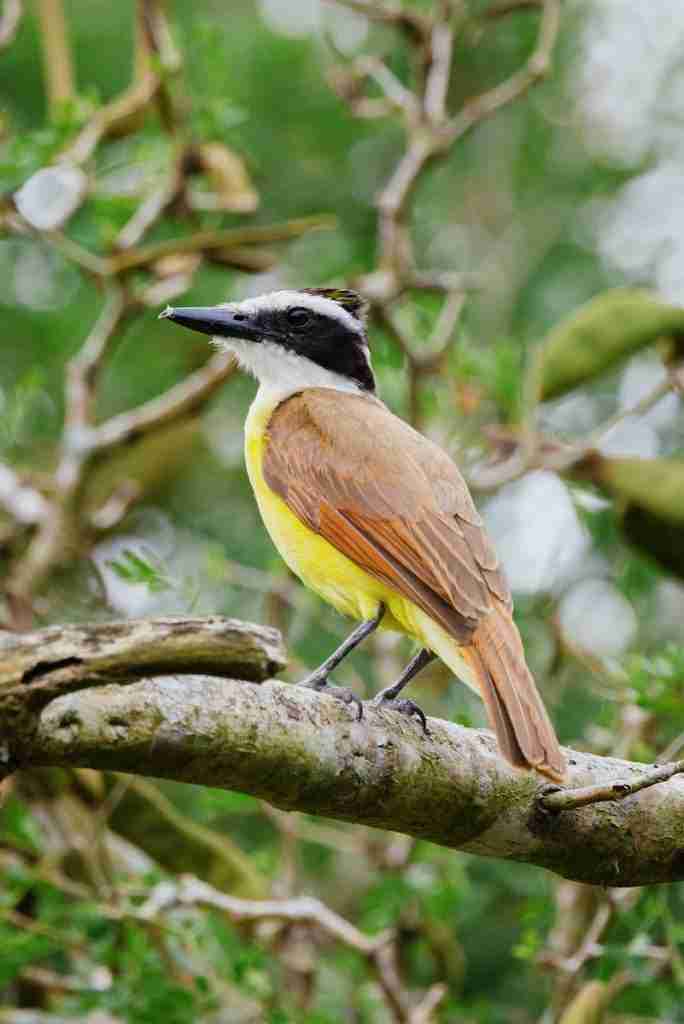
The great Kiskadee is a popular bird found in Ecuador. Native to the Amazonian lowlands and eastern Andean foothills, this large flycatcher is easily spotted with its white head, yellow chest and back, black wings and tail, and russet underparts. Its song is loud and distinctive; it consists of three or four harsh notes followed by high-pitched whistles.
Great Kiskadees are omnivorous, feeding on fruit, insects, and small vertebrates like lizards and frogs. These birds love to perch in the treetops or atop fences and telegraph wires, from which they can easily swoop down for prey. They are often seen in groups of four or five, foraging together in open areas.
Great Kiskadees are also very social birds, engaging in courtship displays and playing tag with each other in the air. As an especially beloved species of bird to watch in Ecuador, the Great Kiskadee is sure to bring joy to any birdwatcher looking to expand their life list.

Southern Lapwing

Southern Lapwing, also known as the Andean lapwing, is a species of bird found in Ecuador. It occurs mainly in open areas such as grassland, wetland, and agricultural land and is usually seen near water bodies. The Southern Lapwing has an overall gray appearance with a white belly and black patches on its wings and tail feathers. It feeds mainly on insects and other small invertebrates, as well as grain if available.
During the breeding season, it displays a variety of courtship behaviors such as bowing, running around its mate in circles, and producing loud calls. The Southern Lapwing is an important part of Ecuador’s ecosystem, helping to maintain insect populations and keeping soil aerated by digging with its beak. Despite this, the species is declining due to habitat loss and illegal hunting. Conservation efforts are needed to ensure that populations of this important species remain stable in Ecuador.
It is also important to recognize that eco-tourism has been increasing in recent years, bringing more people into contact with the Southern Lapwing and bringing potential threats such as disturbance and degradation of habitat. To effectively protect this species, it is important to educate visitors on the importance of these birds and their habitats so that they understand the need for conservation. Additionally, proactive measures such as creating protected areas and increasing law enforcement against illegal poaching can help ensure sustainable populations of the Southern Lapwing in Ecuador.

Tropical Kingbirds
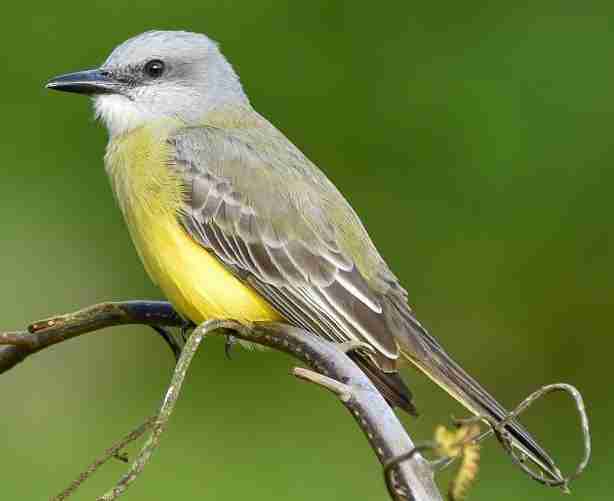
The species is quite common in the lowland rainforests of Ecuador and can also be found in its wetlands, coastal lagoons, and mangrove forests. They are often seen perched atop tall trees or wires near open areas such as fields, pastures, and roadsides.
Tropical Kingbirds are medium-sized birds with long and slender bills. They have grayish-brown upperparts, light gray underparts, broad wings, and sometimes have a reddish tinge to their crowns. These birds feed on insects such as ants, grasshoppers, dragonflies, and moths that they catch in midair or by pouncing from a perch. They also eat fruits and seeds.
Tropical Kingbirds are generally solitary but can sometimes be found in small groups, usually foraging for food or roosting. During the breeding season, pairs of this species may build nests together, usually a cup-shaped nest made from grasses and lined with feathers and animal fur. The eggs are typically white or light blue with brown speckles.
In Ecuador, Tropical Kingbirds can be found throughout the year in their preferred habitats and are especially numerous during the wet season. They are an important species for insect control, helping to keep many of Ecuador’s crops free from pests. They also provide a beautiful spectacle as they soar through the Ecuadorian sky.

Cloud forest pygmy owl

The Cloud Forest Pygmy Owl is a small owl species found in the cloud forests of Ecuador. It is brownish-grey in color with distinctive white spots on its back, brown streaks along its throat and chest, and a white barred tail. This species feeds mainly on small mammals such as rodents but may also take birds, reptiles, and insects.
The Cloud Forest Pygmy Owl is a shy and elusive species that prefers to remain hidden in the dense foliage of rainforest canopies or tall trees. This species has been spotted less frequently in recent years, likely due to habitat destruction and fragmentation as well as predation from larger owls.
Conservation efforts are needed to protect this species from further decline. One such effort is the creation of protected areas within its range, where land is set aside for this species and other native wildlife to thrive in their natural habitats.

Smooth-billed Anis
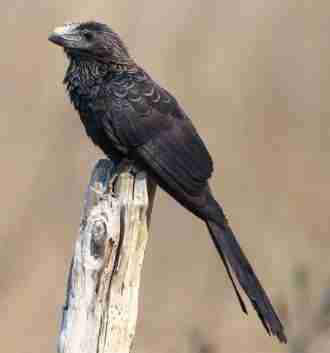
(Crotophaga ani) is a bird species that can be found in the tropical and subtropical regions of Central and South America. With distinctive flat heads and powerful, rounded beaks, these animals also possess long-tapered tails and stubby, rounded wings. In Ecuador, they inhabit lowland dense forests, as well as mangroves, agricultural areas, and parks. The Smooth-billed Anis feeds mainly on insects, spiders, snails, lizards, amphibians, and plant material.
They forage in pairs or small groups, usually near the ground or within low foliage. The Smooth-billed Anis is considered a common species with a stable population trend in Ecuador. It is classified as Least Concern by the IUCN Red List of Threatened Species. Nevertheless, they are vulnerable to changes in land use and the destruction of their habitat. Therefore, conservation measures should be implemented to ensure the long-term survival of this species.
These may include reducing or preventing deforestation, establishment of protected areas and restricted access to forested areas, as well as providing educational materials about the importance of these birds for local communities.
Additionally, monitoring and research of their populations should be conducted to have a better understanding of the species’ ecology, and develop more effective conservation plans. In this way, the Smooth-billed Anis can continue to play an important role in Ecuador’s rich biodiversity for generations to come.

Blue-Gray Tanager
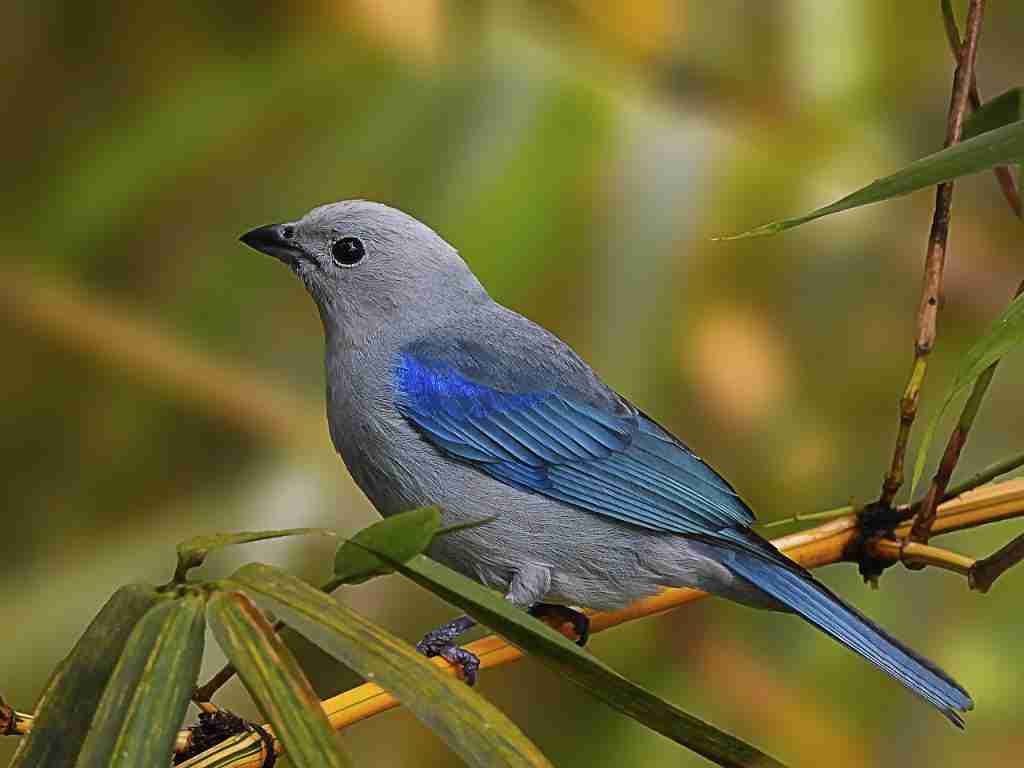
(Thraupis episcopus) is a well-known species of finch found across South America and parts of Central America. It is often seen in the wild in Ecuador, where it can be found inhabiting subtropical or tropical dry forests, moist montane forests, and heavily degraded former forest habitats.
The Blue-Gray Tanager is a medium-sized finch with a distinctive blue-gray plumage, which gives this bird its name. Its head and upperparts are usually pale or light gray, while the underparts and wings are slightly darker. It has black legs and feet, as well as an orange bill. The tail of the Blue-Gray Tanager is quite long and has a black tip.
The Blue-Gray Tanager feeds on fruits, flowers, seeds, and other items found in its habitat. It typically forages alone or in pairs, but can also be seen flocking with other species of birds such as White-Tipped Dove, Great Kiskadee, and Red-Crowned Parrot.
The Blue-Gray Tanager can sometimes be heard singing its own song, which is a series of short, sharp notes. During the breeding season, males will also display their colorful plumage to attract females. The nests of these birds are typically made of grasses and lined with feathers or other soft materials.

Bright-rumped Attila

(Attila spadiceus) is a species of bird found in Ecuador. It is a species of tyrant flycatcher, endemic to the South American tropics. The Bright-rumped Attila inhabits humid montane forests and adjacent habitats throughout the Andes Mountains, from Venezuela south to southern Bolivia.
In Ecuador, it is commonly found in the western Andes, from Quito to Loja. This bird is also found in the eastern Andes, in the Cordillera Oriente and areas of Carchi Province. It prefers montane and submontane moist forest habitats at elevations between 1500-3000 m above sea level. The species may also be found in humid secondary forests, small woodlands, patches of scrub and at the edges of cultivated fields.
Bright-rumped Attilas are omnivorous, feeding on insects and fruit. They frequently join mixed species flocks in search for food, often accompanied by Sylvia tyrannides, Myiodynastes luteiventris, and Buthraupis wetmorei.
This species breeds from April to June in Ecuador, building a cup-shaped nest of mosses, lichens, and spider webs. Both parents share in incubating the eggs for about 16 days before they hatch. The young fledge after 18 days. They are frequently seen alone or in pairs and rarely in flocks.

Scaly-naped Amazon
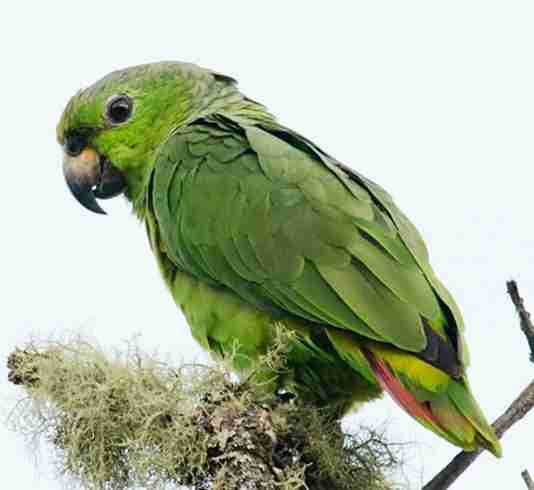
These Parrots (Amazona auropalliata) are found in the tropical forests of Ecuador, from the upper Amazon basin to the foothills of the Andes Mountains. These birds have predominantly green plumage with a yellowish nape and hind-neck, giving them their distinctive name. They reside in flocks that normally consist of less than 15 individuals.
Scaly-naped Amazon Parrots are seed and fruit eaters, consuming a variety of tropical fruits, nuts, grains and insects. They feed mainly on the ground or in trees, sometimes traveling to different areas to find food that is plentiful in that season. These parrots prefer to nest in tree cavities but will also use man-made nesting boxes.
Scaly-naped Amazon Parrots are considered to be vulnerable due to deforestation and capture for the pet trade. It is estimated that there are fewer than 10,000 of these birds left in the wild, so protecting their habitats and regulating their captivity is essential in order to ensure their survival.
Conservation efforts have been implemented in order to protect these birds, including habitat protection and educational campaigns. With continued support, the population of Scaly-naped Amazon Parrots can continue to thrive in Ecuador.

Boat-billed Flycatcher
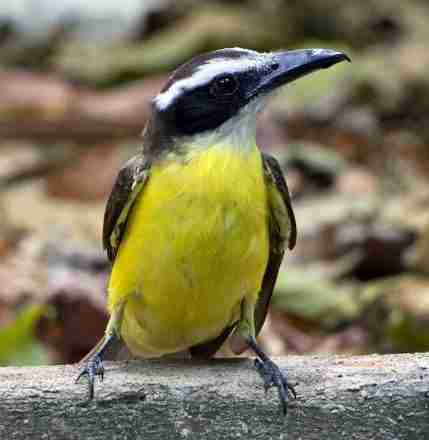
Boat-billed Flycatcher is a rare bird species found in Ecuador. It is a medium-sized flycatcher that is easily distinguishable by its large, flattened bill and black mask covering the eyes. The crown of the head and the back are gray or olive while the underparts are pale yellowish white.
This bird species is commonly seen in wet lowland forest areas and mangroves, but it can also be found in agricultural areas and secondary growth forests. During the breeding season, Boat-billed Flycatchers form monogamous pairs and prefer to nest in tall trees near water sources.
Both members of the pair take part in building their nests which are made out of twigs lined with soft material such as feathers, grass and plant fibers. They feed mainly on insects but will also take some fruit. Conservation efforts have been established to ensure the continued existence of this species, as its population is decreasing due to destruction of its habitat by deforestation.

White-tipped Dove

(Leptotila verreauxi) is a small, stout-bodied bird found in Ecuador. It has a white cap and tail but is otherwise a light greyish-brown color. Its wings are short, broad and rounded. The White-tipped Dove is an omnivore that feeds on fruits, flowers, buds and insects. It is most commonly found in lowland forests, scrublands and agricultural areas. Its call is a loud, repetitive “coo-hoo” sound, which it uses to attract mates during breeding season.
The White-tipped Dove is an important food source for many predators, including hawks and owls. Conservation efforts are being made to help protect this species, including habitat protection and reintroduction programs. It is considered to be of least concern on the IUCN Red List of Threatened Species.

Green Kingfisher

Green Kingfisher is a species of bird found in Ecuador. It is mostly found in coastal areas and along rivers, streams, and other water bodies. The Green Kingfisher has emerald green upper parts with a blue-green back and wings, while its belly is bright yellow. The species has an orange-red bill and legs.
The Green Kingfisher feeds mainly on small fish and other aquatic prey like insects, crabs, shrimps and frogs. It typically perches at a high point overlooking the water then dives down to capture its prey. The Green Kingfisher is an important species in many ecosystems as it provides important ecological services such as controlling pest populations.
The Green Kingfisher is listed as “Least Concern” by the International Union for Conservation of Nature (IUCN). However, its population has declined in some areas due to habitat destruction and overfishing. As a result, conservation efforts are needed to protect and restore suitable habitats in Ecuador. Such efforts could include establishing protected areas, regulating fishing activities and restoring degraded habitats. By doing so, the Green Kingfisher and other species of birds can continue to thrive in Ecuador’s ecosystems.

Roadside Hawk
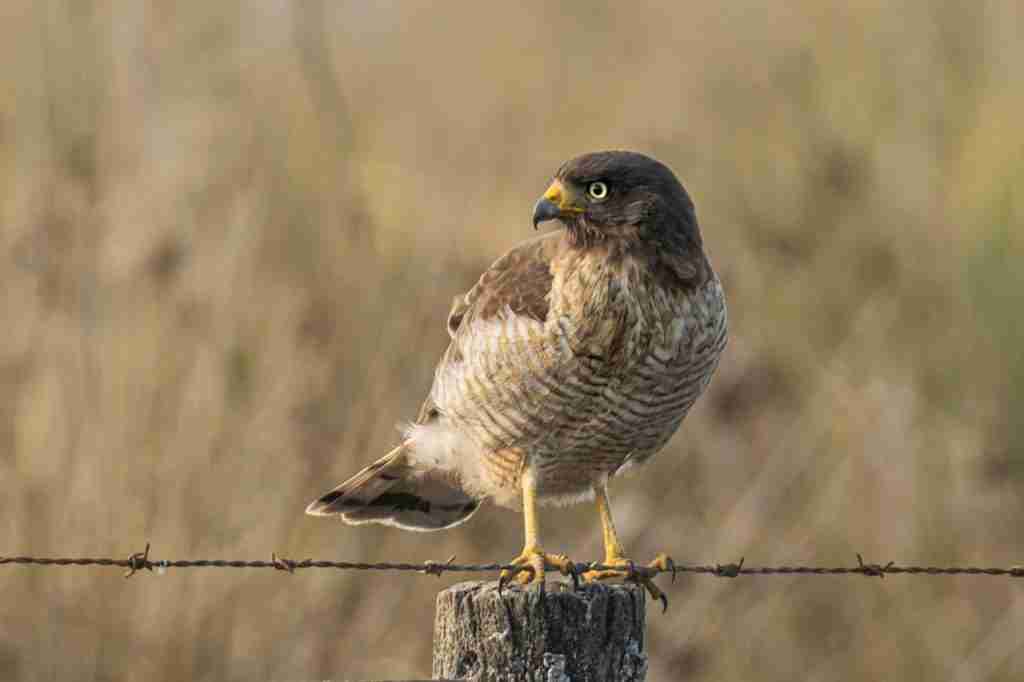
(Rupornis magnirostris) is a large bird of prey native to Ecuador. It is a common resident of open grassy areas, and can often be seen perched atop trees or telephone poles along the roadside. As its name implies, it is well adapted to hunting from these perches, swooping down on unsuspecting prey such as small mammals, reptiles, and insects.
The Roadside Hawk has a large hooked bill, yellow eyes, distinct chestnut breasts, and wings with pale bars. Its plumage is mostly greyish-brown in color with some white streaks on its head and back. In flight, it can be identified by its long tail feathers that stream behind it as it soars gracefully through the sky.
The Roadside Hawk is an impressive hunter and plays an important role in controlling the populations of its small prey animals. It is considered to be a species of the least concern, with stable numbers throughout Ecuador. With its beautiful plumage and remarkable hunting skills, it is easy to see why the Roadside Hawk has become such a beloved part of the Ecuadorian landscape.

Rufous-breasted Wren
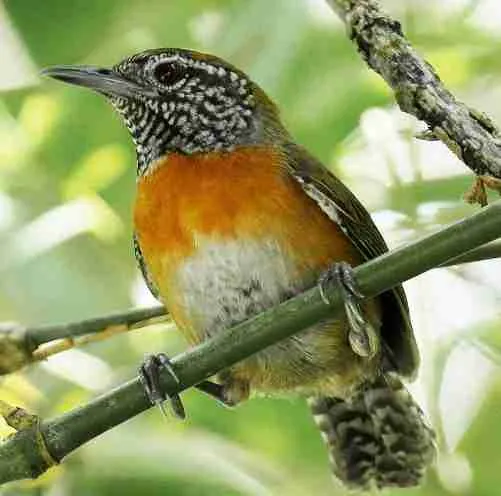
(Thryothorus rutilus) is a species of bird found in Ecuador. It is a small bird, growing to only 11-12 cm in length, and has distinctive rusty-red chest feathers with black streaks on the sides. The Rufous-breasted Wren inhabits wet forests, usually near water sources such as lakes, marshes, and swamps. It feeds mainly on insects, spiders, and small worms, which it finds among dead leaves on the forest floor.
The Rufous-breasted Wren is an important species in Ecuador’s environment as it helps to keep insect populations in check and aids seed dispersal due to its tendency to eat fruit when available. The species is classified as Near Threatened, with its population being affected by deforestation and agricultural expansion in Ecuador.
As a result, conservation efforts have been put in place to protect and restore the Rufous-breasted Wren’s habitat in order to ensure its continued survival. Such initiatives include replanting of native trees, controlling cattle grazing, and maintaining buffer zones around waterways. With these efforts in place, the Rufous-breasted Wren can continue to play an important role in maintaining a healthy ecosystem in Ecuador.

Andean Flicker
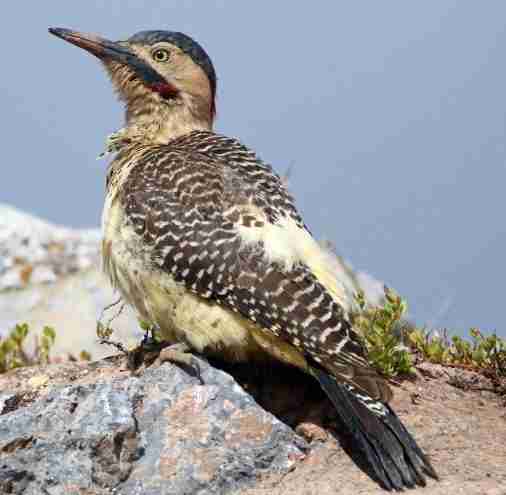
(Colaptes rupicola) is a large woodpecker native to the Andean region of Ecuador. It has a distinctive yellow head, white throat and breast, and bold black-and-white checkered back. The Andean Flicker inhabits forests of various altitudes in the Andes Mountains of Ecuador, ranging from the coast to the highland forests.
It is an agile climber that feeds on insects found in dead wood, and occasionally on fruits of nearby trees. The nesting season for the Andean Flicker begins in October and continues until May. During this time, it builds its nest by excavating a hole in a tree trunk or branch, which is then lined with feathers, leaves, and bark.
The Andean Flicker is a mature bird but still considered to be uncommon within its range due to deforestation activities throughout Ecuador. Its conservation status has been classified as near threatened by the IUCN, making it imperative that efforts are taken to protect its habitat and population.

Crimson-fronted Parakeet

Crimson-fronted Parakeet is a species of parrot native to Ecuador. It is found in the Andes Mountains of central and southern Ecuador, where it inhabits humid montane forests. It feeds on buds, fruits, flowers, and seeds. The Crimson-fronted Parakeet is listed as Near Threatened by the IUCN due to its small population size, which is estimated to be between 2,500 and 10,000 individuals. This species is threatened by habitat loss due to deforestation and the clearing of land for grazing. Conservation efforts are being taken to protect this parrot’s habitat, including the creation of national parks in its range.
The Crimson-fronted Parakeet is also protected under Ecuadorian law, which prohibits its capture and trade. However, illegal trapping of the species still occurs in some areas. In order to ensure the long-term survival of this species, further efforts must be made to protect its habitat. Additionally, public awareness campaigns are needed to reduce the demand for illegally trapped birds and discourage people from engaging in such activities.
In captivity, the Crimson-fronted Parakeet can be kept as a pet. However, due to their small population size in the wild, it is important that these birds only come from licensed breeders. To ensure they receive proper care, potential owners should have knowledge of parrot husbandry and nutrition. Additionally, they should be provided with a large cage, plenty of toys and activities to keep them entertained. With proper care, the Crimson-fronted Parakeet can make a wonderful pet that will bring joy to its owners for many years.

Scarlet Macaws
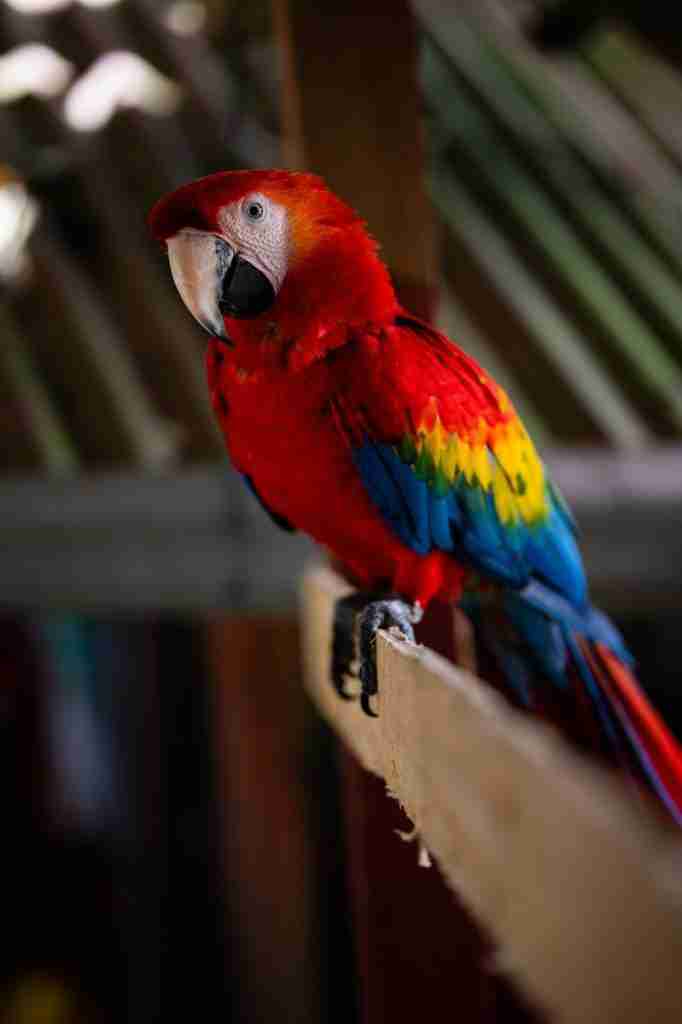
(Ara macao) are large, vibrant parrots native to the humid forests of Ecuador. They inhabit lowland regions and typically feed on high-energy fruits found in these areas. Scarlet Macaws have five distinct subspecies, with two residing in Ecuador: Ara macao cyanoptera and Ara macao macao.
The Scarlet Macaw is listed as Near Threatened by the IUCN, due to its decreasing population size and fragmentation of its habitat. The main threats to the species’ survival include deforestation, illegal trapping for the pet trade, and the destruction of nesting sites. In Ecuador, conservation efforts are being taken to protect Scarlet Macaws in their natural habitats, including the creation of protected areas.
In captivity, Scarlet Macaws make excellent pets if they are raised with proper care and attention. They need to be provided with a large cage, plenty of toys and activities to keep them entertained, as well as an appropriate diet that includes fresh fruits and vegetables.
Potential owners should also have knowledge of parrot husbandry and nutrition, as well as an understanding of the species’ natural behaviors. With proper care, Scarlet Macaws can make wonderful companions that will bring joy to their owners.

What kind of birds live in Ecuador?
Ecuador is a paradise for birdwatchers. From the mighty Andes Mountains to the lush Amazon rainforest, Ecuador is home to some of the most diverse and colorful bird species in the world. There are more than 1,800 species of birds in Ecuador, including many rare and endangered species.
Some of the most famous birds found in Ecuador include the Andean Condor, Scarlet Macaw, Cock-of-the-rock, Magnificent Frigatebird, and Harpy Eagle. There are also many hummingbirds, toucans, parrots, hawks and owls that call Ecuador home. Ecuador is a great destination for birdwatchers of all levels. With its wide variety of habitats and abundance of bird species, Ecuador offers a truly unique and unforgettable birdwatching experience.
Ecuador is also home to several aquatic birds, such as the Blue-footed Booby, Brown Pelican, Magnificent Frigatebird and American White Ibis. These beautiful waterbirds can be seen along the coastline as well as in mangrove swamps, lagoons and estuaries. Other aquatic birds that can be seen in Ecuador include the Black Skimmer, Roseate Spoonbill and American White Pelican.
What’s the most famous bird in Ecuador?
The answer is simple: the Andean Cock-of-the-Rock (Rupicola Peruvianus). This vibrant species of cotinga is native to the tropical forests and cloud forests in the Andes Mountains of Ecuador. The male birds are especially beautiful, with their red and orange feathers, while females have more brownish plumage. These birds are also known for their loud, shrill call and vibrant courtship displays. They can often be seen perched on open branches in the early morning hours, singing away! They may not be the most common species of bird in Ecuador, but they sure do know how to make an impression!
How many species of birds are in Ecuador?
Ecuador is home to an incredible variety of bird species. There are a total of 1,637 bird species that can be found in Ecuador, making it the second most biodiverse country worldwide when it comes to birds. Furthermore, 463 of these species can only be seen in Ecuador, meaning that more than a quarter of all the bird species in the country are unique to this location. This makes it a must-visit destination for avid birdwatchers!
Ecuador boasts an incredible variety of habitats, from cloud forests and grasslands to snow-capped mountains, which provides a wide range of options for birding. Many of these habitats also have many endemic species, meaning that you can find species that aren’t found anywhere else in the world. So whether you are a beginner just starting out birdwatching or a seasoned expert, Ecuador is sure to provide an unforgettable birding experience!
The country also has many national parks and protected areas that offer excellent opportunities for birders of all levels. The Cotopaxi National Park, in the central Andean highlands is one of these parks. It holds many species such as condors, hummingbirds, and eagles that can only be seen in Ecuador.
Are there parrots in Ecuador?
Yes, there are many species of parrots in Ecuador! The country is home to over 40 species of parrots. These include some of the most popular and sought after species like macaws, toucans, conures, and Amazons. Some of the rare or endangered parrot species that can be found in Ecuador include the Golden-plumed parakeet, the Andean cock-of-the-rock, and the Scarlet-fronted parakeet.
Ecuador is a paradise for birdwatchers and those wishing to observe these colorful birds in their natural habitat. Parrot watching tours are available throughout the country and offer visitors an opportunity to explore and admire the beauty of Ecuadorian parrots. From the cloud forests of the Andes, to the humid coastline and Amazon rainforest, Ecuador is a bird-lovers paradise!
The national bird of Ecuador
The national bird of Ecuador is the Andean Condor (Vultur gryphus). This majestic raptor is considered to be a symbol of strength, power and freedom in Ecuador. The adult males have white-tipped wings and a distinctive red caruncle on their upper neck. These birds can often be seen soaring through the skies of Ecuador and they are a sight to behold. They can also be found in the mountains of Peru and Colombia, but there is nowhere else where they are more celebrated than in Ecuador!
South American Classification Committee (SACC) recognizes the Andean condor as a species Vultur gryphus. This species is legally protected in Ecuador, and they can be commonly seen in national parks like Cotopaxi National Park. These birds are also listed as “Near Threatened” by the International Union for Conservation of Nature (IUCN).

An avid ornithologist, zoologist and biologist with an unwavering passion for birds and wild animals.
Dr. Wilson’s journey in ornithology began in childhood and led him to obtain a Ph.D. in Ornithology from the prestigious Avian Research Institute. He has worked closely with renowned experts in the field and conducted extensive research and field studies globally.


